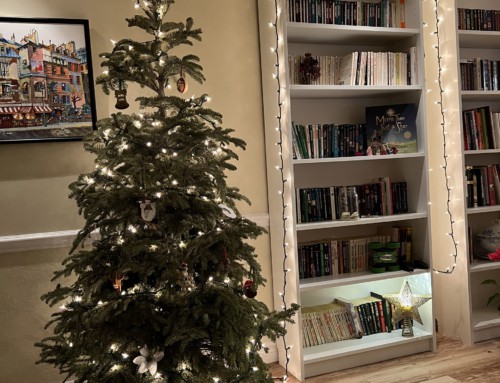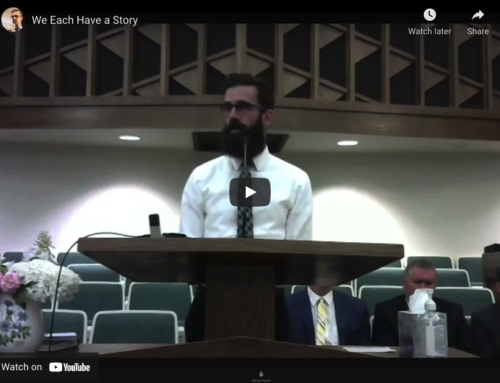This post is for my fellow Latter-day Saints with regard to one particular way that we organize our congregations for worship: the YSA Ward.
In my current YSA ward I’m serving as co-chair of the fellowship committee.
My co-chair and our committee take on the responsibility of supporting everyone who begins attending our ward for roughly their first three months. We ensure they feel welcome. We ensure they connect with resources they need. We ensure the Relief Society and Elders’ Quorum Presidencies are aware of them and arrange visiting- and/or home-teaching assignments. We ensure the executive secretary invites each member to meets a member of the bishopric and establish a relationship there and perhaps receive a calling to serve in the ward. And so on.
Materially, this means every week on Sunday I co-host a Sunday School class for people who are attending our ward for the first time (about 4-8 people every week), and also the ward clerk gives me a report of all the new records we receive that week from Church headquarters … which is usually another 4-8 people who supposedly now live in our boundaries and who haven’t yet shown up on Sunday for us to meet them.
Recently, we got a batch of 40-something names, and it turns out a nearby family ward sent this huge batch of records to us.
Here’s the problem with that: there’s a pervasive belief (at least in U.S. Mormon culture) that if you meet the parameters of a singles ward, then that IS your ward.
Translated: if you are 18-31 years old and not married, then where you “belong” is in the YSA ward in which you live.
But that’s not true.
Let the record show … being in a YSA Ward is OPTIONAL. It’s not the default. It’s a personal choice for any Young Single Adult member of the Church.
I’m writing this post for two reasons:
- So I have an easy reference point whenever this comes up in the future.
- Almost no one I talk to knows the policy, and I value our pro-agency doctrine. This false belief is a chink against that glorious doctrine of total governance of the self.
The false belief sounds like and looks like this:
- Leadership (bishopric members, EQPs, RSPs, etc.) expecting that single members of their stake will participate in that ward.
- Leadership (bishopric members, EQPs, RSPs, etc.) expecting that college students home for the summer will participate in that ward.
- Leadership (bishopric members, EQPs, RSPs, etc.) expecting that leadership and members of surrounding family/conventional wards will “send” their YSAs to the YSA ward.
- Bishoprics and/or ward clerks from family/conventional wards mass exporting the records of all their YSAs to a YSA ward.
- People saying, “Oh you should go to the YSA ward.”
- People saying anything that implies participating in a YSA ward is preferred, especially before inquiring AT ALL about what a YSA thinks his/her spiritual needs are and whether those are better met in a family/conventional ward or a YSA ward.
- Any member of a YSA ward lobbying a fully active YSA attending a family/conventional ward to participate in/transfer records to/worship with/accept a calling in the YSA ward.
- There are countless more ways … leave a comment or email me with your favorite way of seeing people defaulting (or pressuring) to YSA ward participation, and I’ll add it to the list.
WHY is this a problem?
I can think of two reasons:
- It’s NOT the design of YSA wards to have ALL “eligible” YSAs in them [fusion_builder_container hundred_percent=”yes” overflow=”visible”][fusion_builder_row][fusion_builder_column type=”1_1″ background_position=”left top” background_color=”” border_size=”” border_color=”” border_style=”solid” spacing=”yes” background_image=”” background_repeat=”no-repeat” padding=”” margin_top=”0px” margin_bottom=”0px” class=”” id=”” animation_type=”” animation_speed=”0.3″ animation_direction=”left” hide_on_mobile=”no” center_content=”no” min_height=”none”][Policy].
- It assumes policy of the institution is smarter than agency of the individual [Spiritual].
Let’s tackle policy first.
From Handbook 2 (my emphasis added):

16.4 Young Single Adult Wards
Where local circumstances and the number of young single adult members make it desirable, priesthood leaders may recommend the creation of a young single adult ward according to the guidelines in Handbook 1, 9.1.6.
Eligible members may, in consultation with their parents, choose to be members of the young single adult ward or to remain in their conventional ward. The stake president may authorize the young single adult ward to find and fellowship other young single adult members of the stake who are less active. Those who become active may then choose to belong to the young single adult ward or to their conventional ward.
With approval from the stake president, the bishop of a young single adult ward may organize a second Relief Society for young single adult women and a second elders quorum for young single adult men to provide additional opportunities for young single adults to serve and associate with each other.
Membership in a young single adult ward is temporary. Leaders help young single adults prepare to return to a conventional ward when they marry or reach age 31. This transition should provide sufficient time and communication to help the bishop of the conventional ward plan for a calling that helps each transitioning young single adult feel welcome and needed.
May. May. Choose. May. May. May. Temporary.
That seems like A LOT of optionality and ZERO compulsion.
Need I say more?
All that’s needed on my point about policy is this: “Eligible members may, in consultation with their parents, choose to be members of the young single adult ward or to remain in their conventional ward.”
Boom.
It’s up to each person to choose being in the YSA ward. Home base is the family/conventional ward in which they live. That’s “where they belong.” YSA ward participation is totally voluntary. It’s a temporary option for those who choose it.
On the spiritual side…
Not complicated: wards exist to support and strengthen families. A single member of the Latter-day Saint Church is his/her own 1-person family. As the head of his/her own family, a YSA gets to decide what his/her spiritual needs are and choose how they are going to meet those needs.
Shuttling all YSAs into a YSA ward by default is having an institution choose on behalf of the YSA. That’s not the spiritual design of this faith that we have.
So cut it out.
To all my fellow YSAs who are reading this or ever will … the choice is YOURS.
Which means your choice is yours and every other YSA’s choice is THEIRS.
Choice. Choice. Choice.[/fusion_builder_column][/fusion_builder_row][/fusion_builder_container]






Leave a Reply